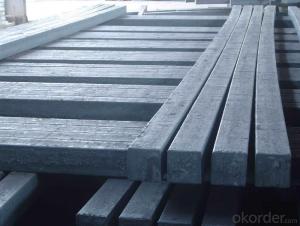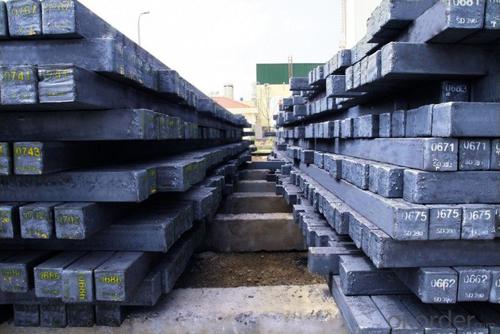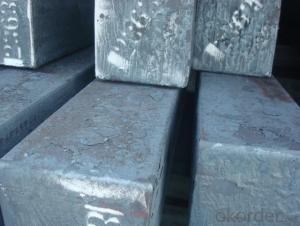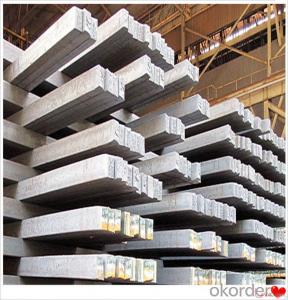Z38 BMP Rolled Steel Coil Construction Roofing Construction
- Loading Port:
- Tianjin
- Payment Terms:
- TT OR LC
- Min Order Qty:
- 100 m.t.
- Supply Capability:
- 10000 m.t./month
OKorder Service Pledge
OKorder Financial Service
You Might Also Like
Structure of Z38 BMP Rolled Steel Coil Construction Roofing Construction 
Description of Z38 BMP Rolled Steel Coil Construction Roofing Construction
PPGI is made by cold rolled steel sheet and galvanized steel sheets as baseplate, through the surface pretreatment (degreasing, cleaning, chemical conversion processing), coated by the method of continuous coatings (roller coating method),
and after roasting and cooling. Zinc coating: Z60, Z80, Z100, Z120, Z180, Z275, G30, G60, G90
Alu-zinc coating: AZ60, AZ80, AZ100, AZ120, AZ180, G30, G60, G90

Main Feature of Z38 BMP Rolled Steel Coil Construction Roofing Construction
1) Excellent corrosion resistance: The zinc layer provides a good protection of Pre-painted Galvanizeed Steel Sheet.
2) High heat resistance: The reflective surface of the material aids in efficiently reflecting the sunlight away and in turn reducing the amount of heat transmitted. The thermal reflectivity converts into energy savings.
3) Aesthetics: Pre-Painted Galvanized steel sheet is available in plethora of patterns and multiple sizes as per the requirements that given by our customers.
4) Versatility: can be used in the various areas.Standard seaworthy export packing: 3 layers of packing, inside is kraft paper, water plastic film is in the middle and outside GI steel sheet to be covered by steel strips with lock, with inner coil sleeve.
Applications of Z38 BMP Rolled Steel Coil Construction Roofing Construction
1. Construction and building: roofing; ventilating duct; handrail; partition panel;etc.
2. Electric appliance: refrigerator; washing machine; refrigerator; DVD;etc.
3.Transportation: oil tank; road sign; etc.
4.Agriculture:barn; etc.
5.Others:vending machine; game machine; etc.  Specifications of Z38 BMP Rolled Steel Coil Construction Roofing Construction
Specifications of Z38 BMP Rolled Steel Coil Construction Roofing Construction
| Classified symbol | Yield Point Minimum N/mm2 | Tensile Strength Minimum | Elongation Minimum % | Application | ||||
| N/mm2 | Nominal Thickness mm (t) | |||||||
| JIS | Yogic | 0.25-0.4 | 0.4-0.6 | 0.6-1.0 | 1.0-1.6 | |||
| G3312 | specification | |||||||
| CGCC | CGCC | -205 | -270 | -20 | -21 | -24 | -24 | Commercial |
| CGCD | CGCD | --- | 270 | --- | 27 | 31 | 32 | Drawing |
| --- | CG340 | 245 | 340 | 20 | 20 | 20 | 20 | Structural |
| CGC400 | CG400 | 295 | 400 | 16 | 17 | 18 | 18 | Structural |
| CGC440 | CG440 | 335 | 440 | 14 | 15 | 16 | 18 | Structural |
| CGC490 | CG490 | 365 | 490 | 12 | 13 | 14 | 16 | Structural |
| CGC570 | CG570 | 560 | 570 | --- | --- | --- | --- | Structural |
| ASTM Designation | Yield Point Minimum | Tensile Strength Minimum | Elongation Minimum % | Application | Q/BQB 445-2004(China standard) | ASM A653/A653M | JISG 3312 | |
| ksi(MPa) | ksi(MPa) | TDC51D+Z | (CS TYPE A+Z) | CGCC | ||||
| A653(M)-99 CS TYPE A,B,C | --- | --- | --- | Commercial | TDC52D+Z | CGCD | ||
| A653(M)-99 FS | --- | --- | --- | Lock Forming | TS250GD+Z | (G250+Z) | - | |
| A653(M)-99 DS | --- | --- | --- | Drawing | TS300GS+Z | (G300+Z) | CGC 400 | |
| A653(M)-99 SS Grade33(230) | 33(230) | 45(310) | 20 | Structural | TS350GD+Z | (G350+Z) | CGC490 | |
| A653(M)-99 SS Grade37(255) | 37(255) | 52(360) | 18 | Structural | TS550GD+Z | (G550+Z) | CGC570 | |
| A653(M)-99 SS Grade40(275) | 40(275) | 55(380) | 16 | Structural | ||||
| A653(M)-99 SS Grade50(345) | 50(345) | 65(450) | 12 | Structural | ||||
| A653(M)-99 SS Grade80(550) | 80(550) | 82(570) | --- | Structural | ||||
FAQ of Z38 BMP Rolled Steel Coil Construction Roofing Construction
We have organized several common questions for our clients,may help you sincerely:
1. How Can I Visit There?
Our company is located in Tianjin City, China, near Beijing. You can fly to Tianjin Airport Directly. All our clients, from home or aboard, are warmly welcome to visit us!
2. How Can I Get Some Sample?
We are honored to offer you sample.
3. Why choose CNBM?
1, ISO, BV, CE, SGS approved.
2, Competitive price and quality.
3, Efficient service team online for 24 hours.
4, Smooth production ability(50000tons/month) .
5, quick delivery and standard exporting package.
6, Flexible payment with T/T, L/C, Paypal, Kunlun bank, etc .
- Q: What are the different types of steel billet handling equipment?
- There are several different types of steel billet handling equipment used in various stages of the steel production process. These equipment are designed to efficiently move and transport steel billets, which are semi-finished metal products used for further processing. 1. Overhead Cranes: Overhead cranes are commonly used in steel mills and foundries for the handling and transportation of steel billets. These cranes have a high lifting capacity and can move billets from one location to another within the facility. 2. Mobile Cranes: Mobile cranes are versatile and can be used for handling steel billets in both indoor and outdoor environments. They are equipped with hydraulic systems for lifting and maneuvering heavy loads. 3. Forklifts: Forklifts are commonly used in warehouses and storage facilities to handle steel billets. They have forks at the front that can be raised and lowered to lift and move the billets. 4. Grab Buckets: Grab buckets are used for handling bulk materials, including steel billets. They have a bucket-like structure that can be opened and closed to grab and release the billets. These are often used in ports and shipping yards for loading and unloading billets from ships. 5. Conveyor Systems: Conveyor systems are used for continuous movement of steel billets along a predefined path. They can be used to transport billets between different stages of the production process or to load and unload them from trucks or trains. 6. Roller Tables: Roller tables are used for transferring steel billets from one conveyor or machine to another. They typically consist of a series of rollers that allow for smooth and controlled movement of the billets. 7. Magnetic Lifters: Magnetic lifters use an electromagnetic field to lift and transport steel billets. They are particularly useful when handling ferrous materials, as the magnetic force allows for secure gripping and easy movement. 8. Palletizers: Palletizers are used to stack and organize steel billets on pallets. They can automatically arrange the billets in a specific pattern, making them suitable for storage or transportation. Each type of equipment has its own advantages and is used in specific applications based on the requirements of the steel production process. The selection of the appropriate handling equipment depends on factors such as the size and weight of the billets, the distance they need to be transported, and the specific needs of the facility.
- Q: How long do steel billets last?
- The longevity of steel billets varies depending on multiple factors, including their storage conditions and utilization. Provided that they are stored appropriately in a controlled environment with low humidity and shielded from corrosion, steel billets can endure indefinitely. Conversely, if they are exposed to harsh weather, excessive moisture, or corrosive substances, their lifespan can be significantly diminished. As for their usage, steel billets are typically melted and transformed into other steel products, such as bars, rods, and beams. The lifespan of the final product hinges on its specific application and the maintenance practices implemented. Generally, steel products are renowned for their durability and longevity, rendering them a dependable option in numerous industries.
- Q: What are the main factors affecting the strength of steel billets?
- There are several main factors that can affect the strength of steel billets. 1. Composition: The chemical composition of the steel, including the types and amounts of various elements, plays a significant role in determining its strength. Alloying elements such as carbon, manganese, and silicon can enhance the strength of steel by forming solid solutions or creating carbides, which increase the steel's hardness and resistance to deformation. 2. Heat treatment: The heat treatment process, which involves heating and cooling the steel billets under controlled conditions, can have a significant impact on its strength. Different heat treatment methods, such as annealing, quenching, and tempering, can alter the microstructure of the steel, leading to variations in its strength properties. 3. Grain size: The size and distribution of the grains within the steel structure can affect its strength. Smaller grain sizes tend to increase the strength of steel, as they hinder dislocation movement and promote grain boundary strengthening. Various processing techniques, such as hot rolling and controlled cooling, can be employed to achieve fine-grained steel billets. 4. Microstructure: The microstructure of steel, which includes the arrangement and morphology of the different phases or constituents, can influence its strength. For example, the presence of certain phases like martensite or bainite can significantly increase the strength of steel by providing a more rigid and stable structure. 5. Processing conditions: The processing conditions during the production of steel billets can impact their strength. Variables such as rolling temperature, deformation rate, and cooling rate can affect the microstructural evolution and mechanical properties of the steel. Proper control of these processing parameters is crucial to achieving the desired strength characteristics. 6. Inclusions and defects: The presence of inclusions or defects, such as non-metallic particles or voids, within the steel can weaken its strength. These imperfections act as stress concentrators and can initiate cracks or fractures, reducing the overall strength and integrity of the steel billets. By considering and optimizing these factors, manufacturers can produce steel billets with enhanced strength properties, enabling their use in various applications where high strength and durability are required.
- Q: How are steel billets cut into desired lengths?
- Various cutting techniques are commonly used to cut steel billets into desired lengths. One of the most frequently employed methods is saw cutting, where a high-speed circular saw with a carbide or diamond-tipped blade is utilized. By securing the billet in place, the saw blade is brought down to create the required length. Another method is torch cutting, which involves the use of an oxy-fuel torch. This torch produces a high-temperature flame directed onto the billet, causing it to melt and be cut through. Torch cutting is preferred for larger and thicker steel billets, as it allows for greater flexibility in cutting irregular shapes or angles. Moreover, plasma cutting is another technique utilized for cutting steel billets. It employs a plasma torch that generates an electrically conductive plasma arc. This arc melts the steel and blows away the molten metal, resulting in a precise and clean cut. Plasma cutting is particularly beneficial for thicker steel billets or intricate shapes and designs. In summary, the choice of cutting technique for steel billets depends on factors such as size, thickness, precision, accuracy, and specific requirements of the end product.
- Q: What is the role of steel billets in the manufacturing of structural steel buildings?
- Steel billets play a crucial role in the manufacturing of structural steel buildings. These billets, which are semi-finished forms of steel, serve as the primary raw material for the production of various steel products used in construction. Firstly, steel billets are used to produce long steel products such as beams, columns, and rods. These components form the skeletal structure of buildings, providing support and stability. By shaping and processing the steel billets through processes like rolling, forging, or extrusion, manufacturers can create these essential structural elements. The high strength and durability of steel make it an ideal material for constructing buildings that can withstand heavy loads and adverse environmental conditions. Furthermore, steel billets are also used to manufacture other crucial components like plates and sheets, which are used for flooring, roofing, and cladding in structural steel buildings. These flat steel products provide a protective and aesthetically pleasing finish to the building, while also contributing to its overall strength and stability. The consistent quality and uniformity of steel billets ensure that the resulting structural steel components have the required mechanical properties, such as tensile strength and ductility, to meet the safety and performance standards demanded by construction projects. Steel billets are often produced using advanced manufacturing techniques, such as continuous casting, which further enhances the quality and reliability of the final steel products. In summary, steel billets are essential in the manufacturing of structural steel buildings as they serve as the raw material for producing various components like beams, columns, plates, and sheets. These components form the framework and protective elements of the building, providing strength, stability, and durability. Through careful processing and quality control, steel billets enable the production of high-quality steel products that meet the stringent requirements of the construction industry.
- Q: What is the global production capacity of steel billets?
- The global production capacity of steel billets is difficult to estimate accurately as it varies from year to year and is influenced by factors such as market demand, economic conditions, and technological advancements. However, according to the World Steel Association, the total global production capacity for steel billets was approximately 1.86 billion metric tons in 2019. This capacity is spread across various countries and steel-producing regions, with China being the largest producer followed by India, Japan, and the United States. It is important to note that these figures are subject to change as the steel industry continues to evolve and expand.
- Q: What are the main surface finishes available for steel billets?
- The main surface finishes available for steel billets include mill finish, pickled and oiled (P&O), galvanized, painted, and coated finishes. Mill finish refers to the surface of the steel billet as it comes from the rolling mill, which is typically characterized by a rough and unfinished appearance. This finish is suitable for applications where aesthetics are not a priority, such as when the billets will be further processed or coated. Pickled and oiled (P&O) finish involves treating the steel billets with an acid solution to remove any mill scale or impurities, followed by applying a thin layer of oil to protect the surface from oxidation. This finish provides a clean and smooth surface, making it suitable for applications where a high-quality appearance is desired. Galvanized finish involves immersing the steel billets in a zinc bath to create a protective layer of zinc coating over the surface. This finish provides excellent corrosion resistance, making it ideal for outdoor applications or environments with high moisture or chemical exposure. Painted finish involves applying a layer of paint onto the surface of the steel billets. This finish offers both aesthetic appeal and protection against corrosion, as the paint acts as a barrier between the steel and the external environment. Painted finishes can be customized in terms of color and texture to suit specific requirements. Coated finishes involve applying a specialized coating onto the surface of the steel billets. These coatings can include epoxy, polyurethane, or other protective materials that provide enhanced corrosion resistance, chemical resistance, or heat resistance. Coated finishes are often used in industries such as automotive, construction, or oil and gas, where the billets are subjected to harsh conditions. Overall, the choice of surface finish for steel billets depends on the specific application requirements, including aesthetics, corrosion resistance, durability, and environmental factors.
- Q: What are the challenges faced in the distribution and supply chain of steel billets?
- There are several challenges faced in the distribution and supply chain of steel billets. Firstly, one major challenge is the transportation of steel billets. Steel billets are heavy and bulky, requiring specialized equipment and infrastructure for their transportation. This can lead to higher logistics costs and difficulties in finding suitable transport options, especially for international shipments. Secondly, the storage and inventory management of steel billets can be challenging. Steel billets require proper storage facilities to prevent corrosion and damage. Additionally, managing inventory levels and ensuring timely deliveries can be complex, as steel billets are often sourced from multiple suppliers and delivered to various locations. Thirdly, quality control is a significant challenge in the distribution and supply chain of steel billets. Ensuring consistent quality throughout the supply chain requires strict adherence to quality standards and effective quality control measures. This includes regular inspections, testing, and certification processes to guarantee the integrity and suitability of the steel billets. Another challenge is the fluctuating demand and market conditions. The steel industry is highly cyclical, with demand and prices subject to economic fluctuations and global market trends. This poses challenges in terms of forecasting demand, managing production capacity, and optimizing inventory levels to meet customer requirements while minimizing costs. Furthermore, global trade regulations and customs procedures can create challenges in the distribution and supply chain of steel billets. Compliance with various import and export regulations, including trade restrictions and tariffs, can impact the flow of steel billets across different countries, leading to delays and additional costs. Lastly, ensuring sustainable and responsible sourcing practices is becoming increasingly important in the steel industry. Meeting environmental and social standards, such as responsible sourcing of raw materials and reducing carbon emissions, can be challenging for steel billet manufacturers and distributors. This requires implementing sustainable practices throughout the supply chain, which may involve additional costs and complexities. In conclusion, the distribution and supply chain of steel billets face challenges related to transportation, storage, quality control, demand fluctuations, trade regulations, and sustainable sourcing. Overcoming these challenges requires effective planning, strong partnerships, and the implementation of efficient processes to ensure a smooth and reliable supply of steel billets to customers.
- Q: Can steel billets be used in the production of pipes?
- Indeed, the utilization of steel billets is possible in the fabrication of pipes. Steel billets serve as the primary material for the creation of diverse steel goods, comprising pipes. The procedure entails subjecting the steel billets to elevated temperatures and subsequently molding them into pipes utilizing distinct techniques like hot rolling, cold rolling, or extrusion. Steel billets furnish the essential strength, durability, and consistency necessary for the manufacturing of pipes. Furthermore, they can undergo further processing and treatment to fulfill specific prerequisites such as resistance to corrosion or improved mechanical properties. Thus, steel billets assume a crucial function in pipe production and find extensive application in the steel industry for this very purpose.
- Q: How is a steel billet made?
- A steel billet is made through a process called continuous casting. It involves pouring molten steel into a water-cooled mold, which solidifies the steel into a rectangular shape. The solidified steel is then cut to the desired length to form a steel billet.
Send your message to us
Z38 BMP Rolled Steel Coil Construction Roofing Construction
- Loading Port:
- Tianjin
- Payment Terms:
- TT OR LC
- Min Order Qty:
- 100 m.t.
- Supply Capability:
- 10000 m.t./month
OKorder Service Pledge
OKorder Financial Service
Similar products
Hot products
Hot Searches
Related keywords
































